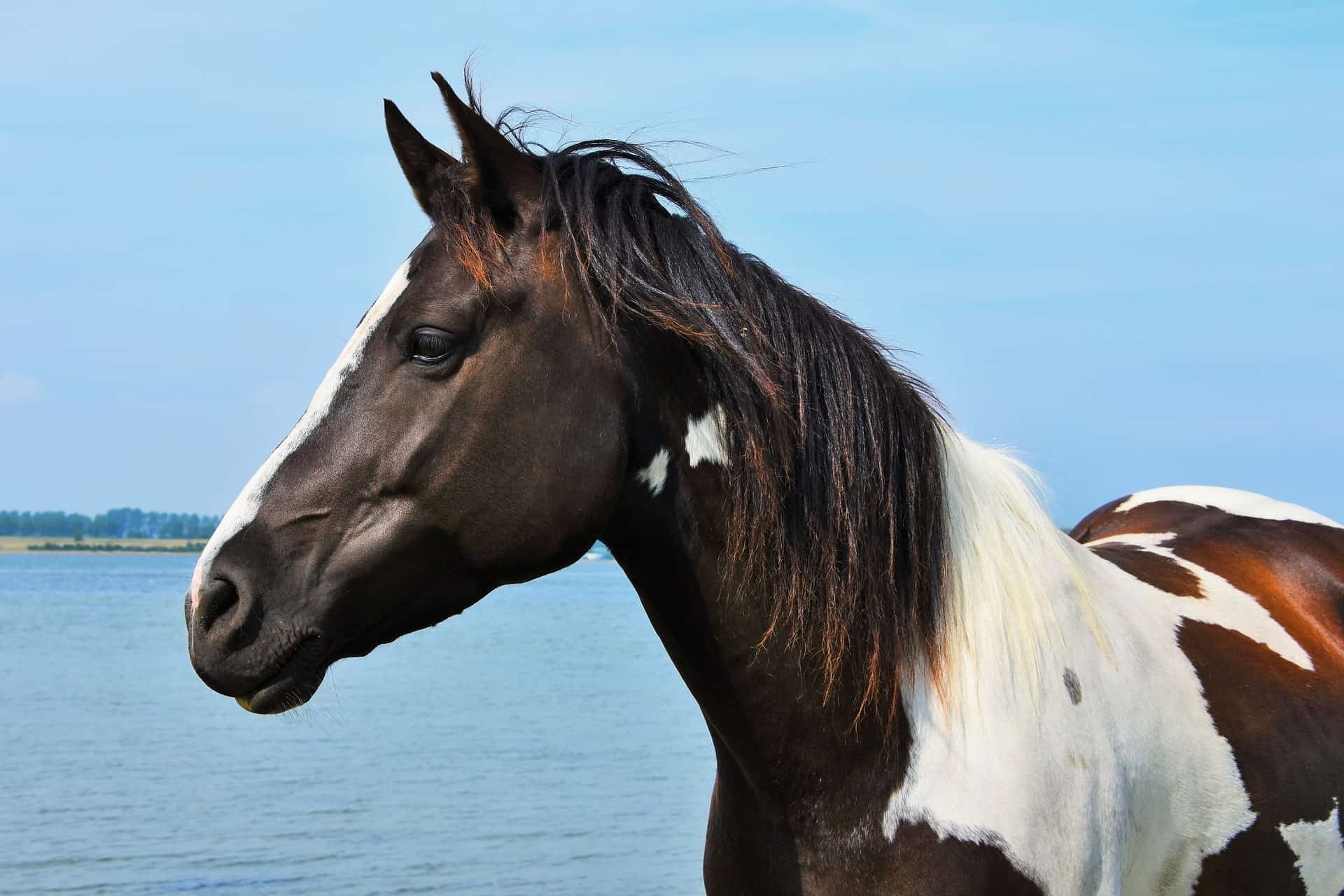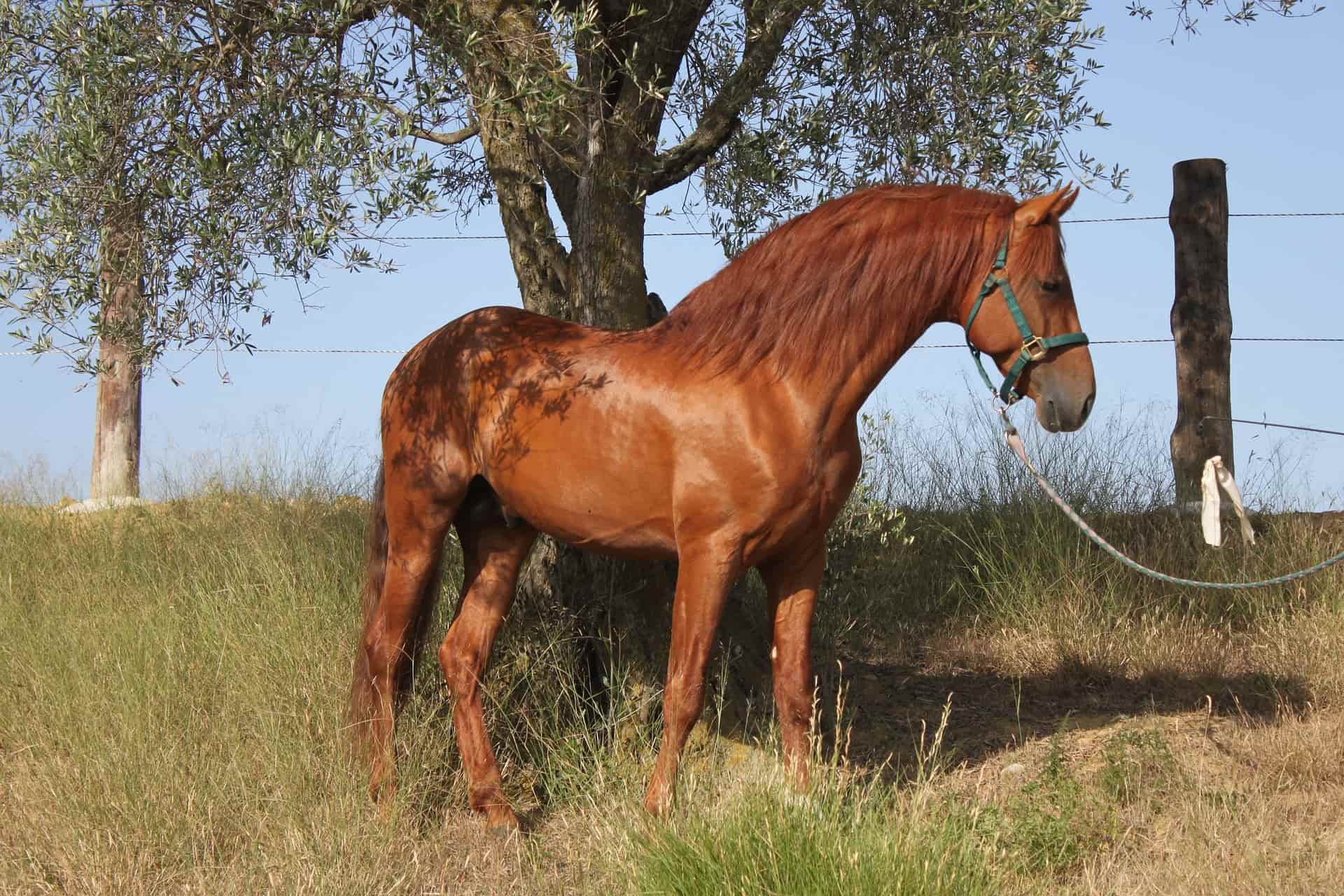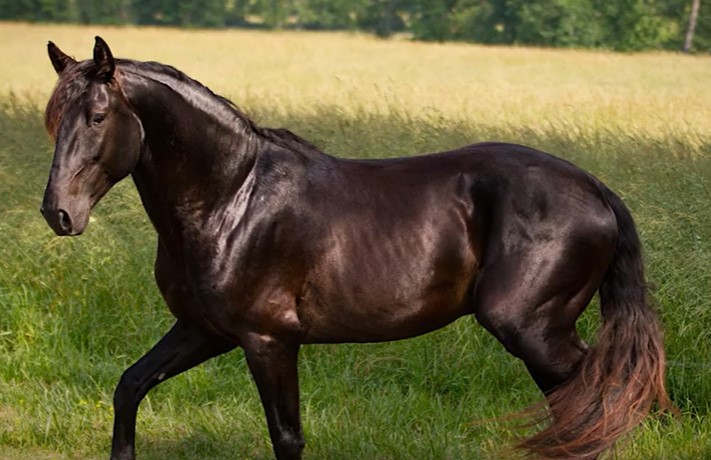There are more than 500 horse breeds recognized formally around the world. And while each breed looks beautiful in its own way, spotted horse breeds are the most attractive.
Their coats come in different patterns, including leopard-style, roan, blanket and more. If you want to learn more about these stunning horses, here’s a list of the top 12 most popular speckled breeds.
Spotted Horse Breeds
1. Appaloosa
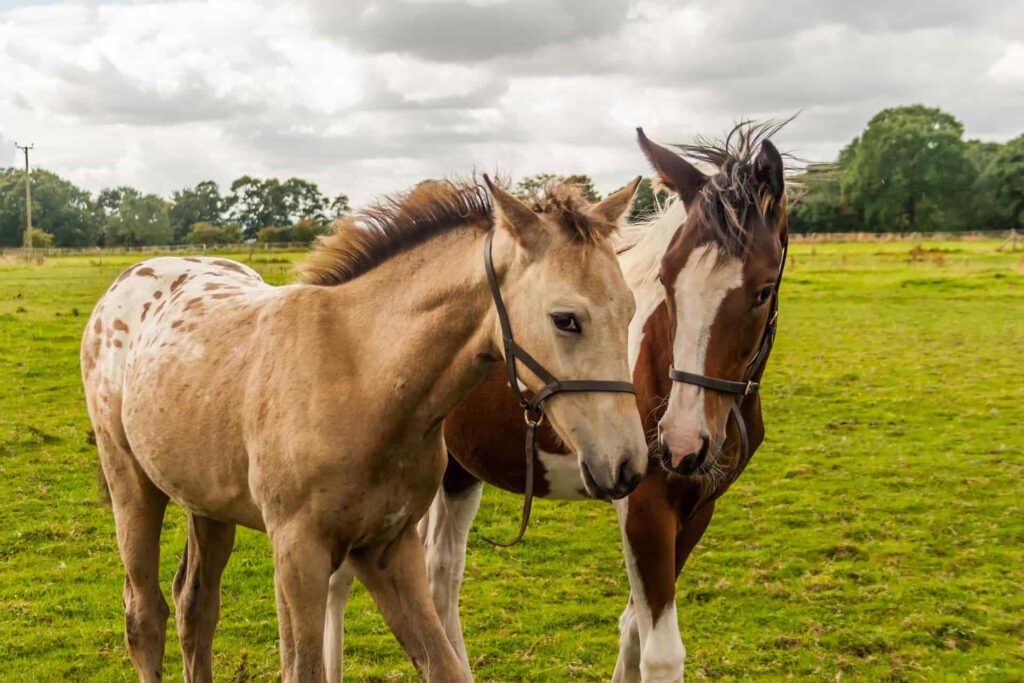
Color Pattern: Spots, blanket (with or without spots), roan (with or without spots)
If there’s one breed that’s recognized specifically for its spotted coat, it’s the Appaloosa Horse. What’s interesting is that no two Appaloosas share the same coat patterns, even though they look so similar. In fact, not all Appaloosas have a spotted coat.
For those that do, the spotted skin is as a result of the leopard complex gene. For years, Appaloosa horses were continually bred with these genes. So much so that the spotted Appaloosa coloring became a distinct trait of the breed.
There are numerous variations of spotted coats of the Appaloosa breed. But the main ones recognized by the Appaloosa Horse Club are blanket, roan, blanket with spots just to mention a few.
The roan pattern is usually a blend of dark and light hairs. Meanwhile, a blanket pattern means there’s one color covering most of the horse’s body.
In terms of physique, the modern-day Appaloosas have the same stocky build as the American Quarter horse. So like Quarter horses, they’re used for ranch work and competitive events. Keep in mind both of these are considered to be some of the most expensive horse breeds.
2. Nez Perce
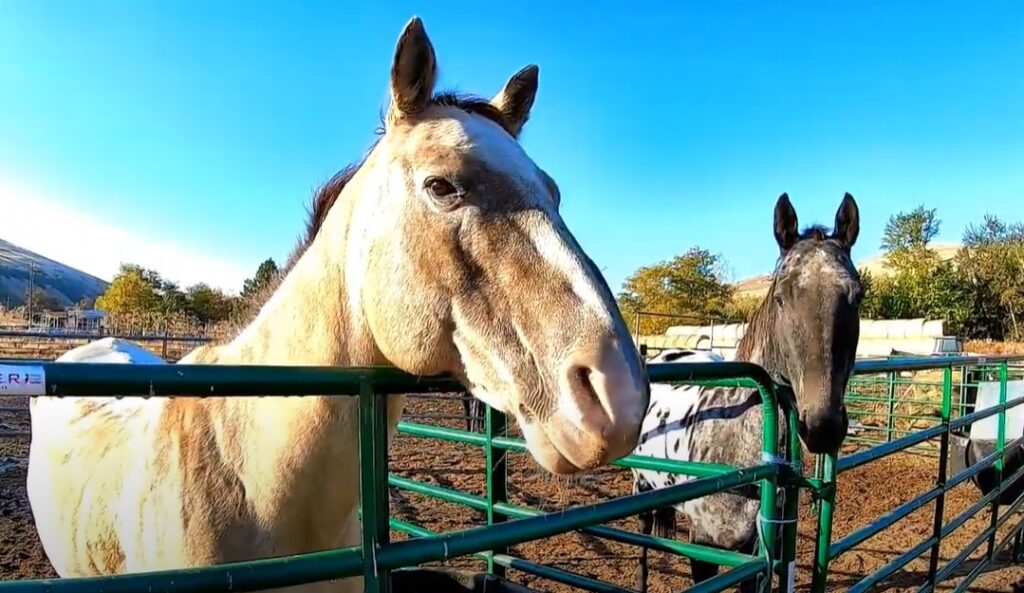
Color Pattern: Spotted and/or blanket coat
Like the Appaloosa breed, the Nez Perce Horse was developed by the Nez Perce tribe in Idaho. As such, it’s not surprising that it has Appaloosa bloodlines. To be a little more specific, it was developed through a breeding program that cross-bred the Appaloosa and Akhal-Teke (a Central Asian breed).
Given its parentage, it is no wonder the Nez Perce horse shares so many characteristics with Appaloosa. For instance, it has the same mottled skin, and either blanket or spotted coat patterns.
What is the Nez Perce horse good for? Well, this breed makes an excellent long-distance runner, so it’s often picked for endurance riding. The fact that it’s a naturally gaited breed makes for very comfortable rides.
3. Tiger Horse
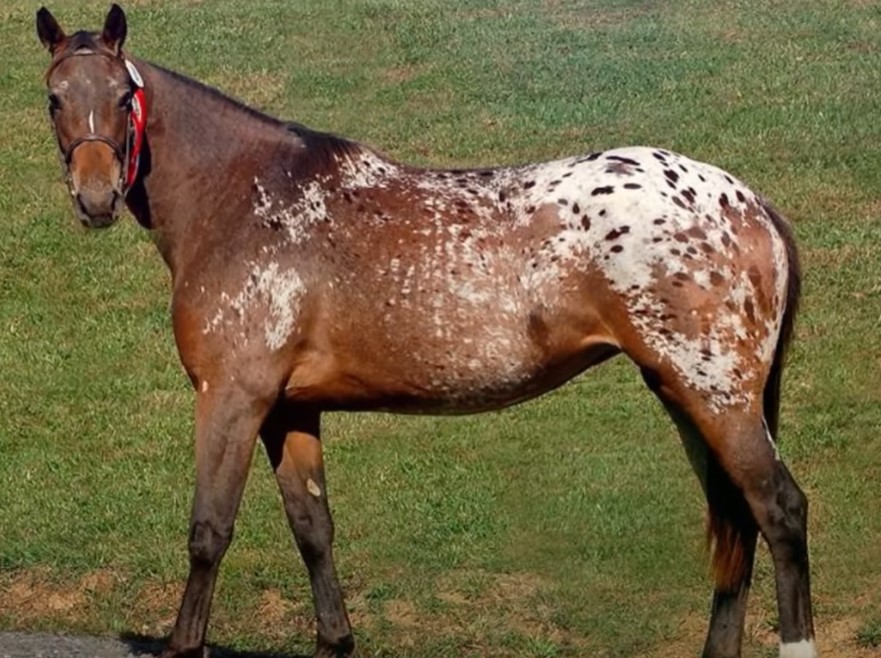
Color Pattern: Blanket, roan, leopard, snowflake
The first time you encounter the name ‘tiger horse’, you might assume that it has a striped coat. But, the Tiger Horse actually has a spotted coat, fairly similar to the Appaloosa’s.
The specific origin of this breed is still shrouded in mystery. But many believe that its predecessors are the Chinese Soulon and Spanish Jenne, which have identical leopard spots.
Suggested Reading: Chinese Horse Breeds
What’s known for sure is that a version of it was developed in 1992 by Mark and Victoria Alley. At the time, their aim was to restore the original tiger horse.
So, they crossbred solid-colored Tigers with Appaloosas. To help with this course, the Tiger Horse Association was created in 1994.
The fact that it’s one of the horse breeds with spotted coats is its main attraction point. However, Tiger horses are also famous for their four-beat intermediate gaits, popularly referred to as the Indian shuffle. The tiger horse height typically ranges between 52 and 64 inches.
4. British Spotted Pony
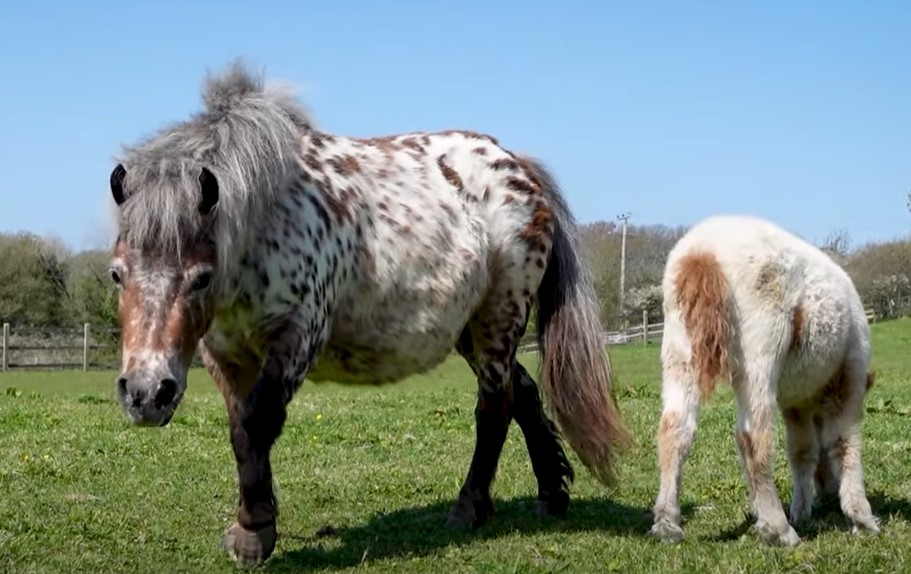
Color Pattern: Few spot leopard, leopard, blanket & snowflake
Not much is known about the origin of the British Spotted Pony except the fact that it’s related to the indigenous Celtic ponies that hail from Wales.
It’s rumored that the spotted coat of this breed offered camouflage, making it easy to blend into its natural surroundings. Throughout history, the British Spotted Pony has been regarded highly, especially by noblemen and royalty.
In 1947, the British Spotted Horse and Pony Society was born. But it split in 1976, forming two distinct breeding organizations: the British Spotted Pony Society and the British Appaloosa Society.
Currently, the Pony Society recognizes three varieties of this breed: miniatures, cobs and riding ponies. The British Spotted Pony height thus ranges between 42 and 57 inches.
5. Colorado Ranger
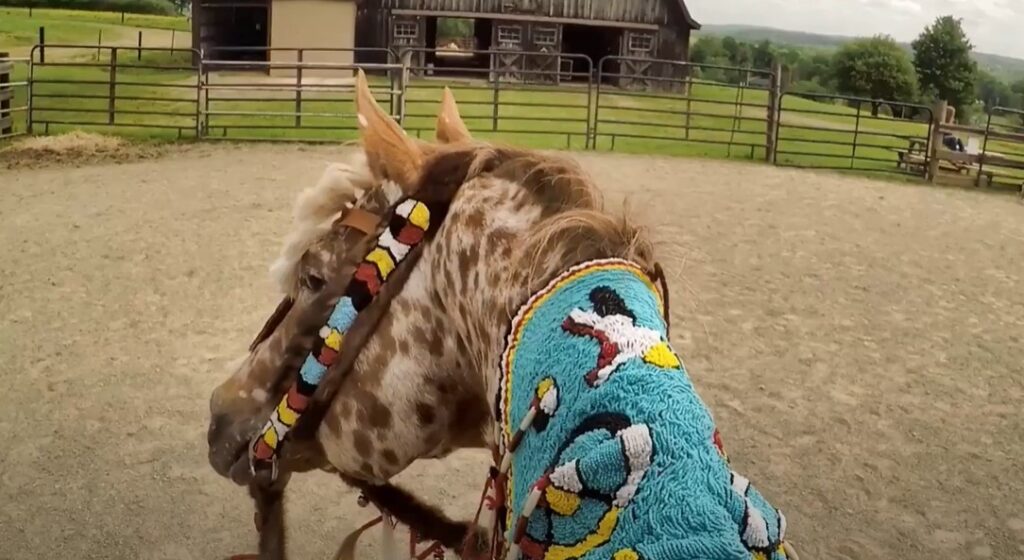
Color Pattern: Leopard spotting
As you might have guessed, this breed is named after the area where it was developed – the Colorado High Plains in the U.S.A.
So just how did Colorado rangers get their gorgeous coloration? Well, this happened after breeding local ranch horses – one of which was the Appaloosa – with Turkish stallions that had been imported into the U.S.
With time, the leopard complex gene became prominent in the breed, which explains its striking resemblance to the leopard Appaloosa.
However, not all Colorado Rangers are spotted as some are solid colored horses. That said, any horse belonging to this lineage that has a pinto coloring isn’t accepted by the Colorado Ranger Horse Association.
Colorado Rangers are muscular with strong hindquarters. These horses have an average height of 61 inches.
What is the Colorado Ranger horse good for? Since they were originally bred as ranch horses, they have great stamina- a factor that enables them to excel in any equine sport; be it harness racing, trail riding or barrel racing.
Suggested Read: Best Horse Breeds for Barrel Racing
It’s also not unusual to find horse owners using the Colorado Ranger for ranch work. After all, it’s believed to have maintained its “cow sense.”
6. Knabstrupper
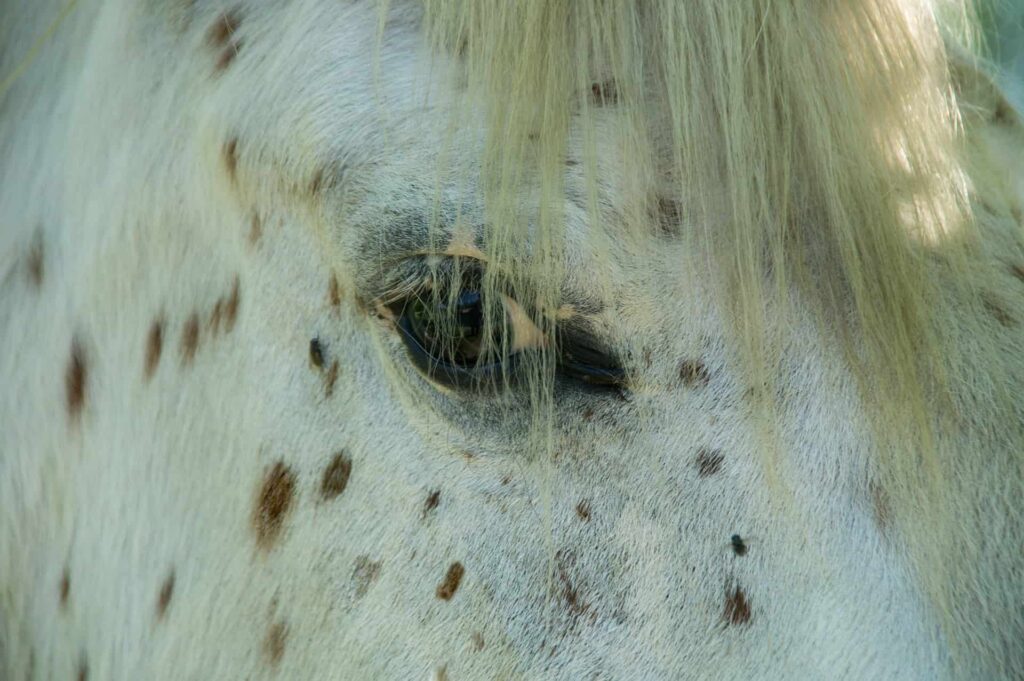
Color Pattern: Leopard spotted coat
The Knabstrupper, which is native to Denmark, can trace its roots to prehistoric spotted horses.
Specifically, the prehistoric horses used for its development were a stallion named Frederiksborg and a chestnut mare named Flaebehoppen. The stallion had a solid color while the latter was a spotted horse breed.
Sadly, the Knabstrupper nearly became extinct around the 1870s. It wasn’t until a century passed that horse breeders made a conscious decision to save this breed. To achieve this, they introduced Appaloosa stallions from the U.S., enhancing its spotted coloring.
The Knabstrupper spotted horses gained prominence pretty fast afterwards. This was largely due to their stamina and zestful character. And since they were mostly left to roam – as opposed to being locked in stables – they became a very versatile breed.
Another aspect that draws many to it is this horses growth stages and fact that it ages well. The Knabstrupper has a long lifespan which makes it a suitable companion animal.
Their descendants – the Appaloosas – are highly versatile horses. However, the Knabstrupper’s character resembles that of warmblood breeds more. As such, this is one of those great horses used in activities such as dressage and show jumping while others make excellent carriage horses.
7. Pony of the Americas
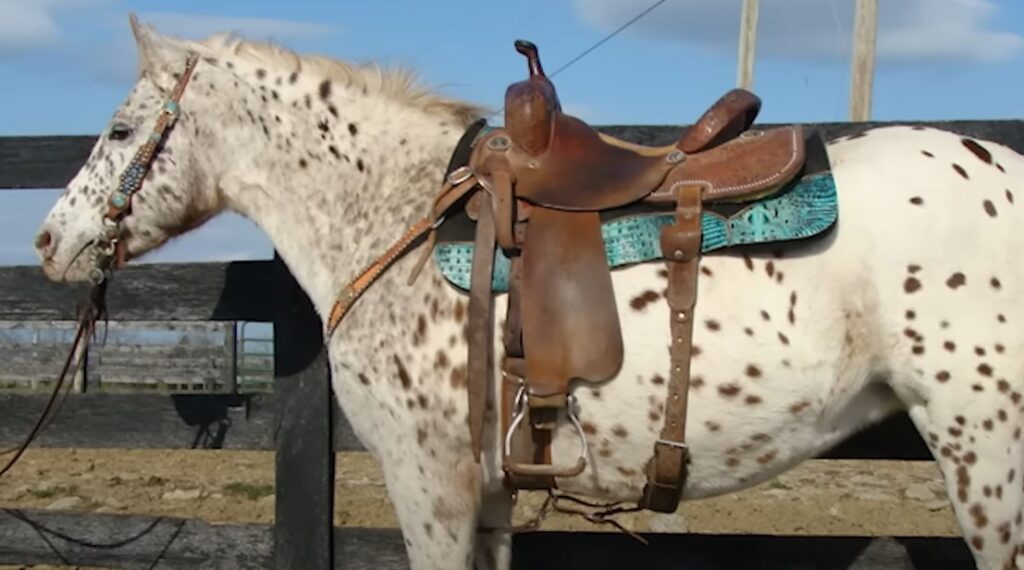
Color Pattern: Blanket pattern with a bit of white over the loin
The Pony of the Americas can trace its roots to Iowa. The stallion credited with the development of Pony of the Americas was an exotic cross between an Arabian, Appaloosa and Shetland Pony.
Suggested Read: 20 Arabian Horse Facts
This horse breed’s registry, popularly known as Pony of the Americas Club, was formed in 1954. Currently, it admits horses with different bloodlines. But, they should comply with the breed’s strict standards, especially when it comes to coat patterns and colors.
An interesting fact about Pony of the Americas is that not all of them are spotted horses. Some have dark spots on a dark background whereas others are white horses with dark spots only on their hindquarters.
There are other distinct characteristics that can help you identify Pony of the Americas. For instance, it usually has mottled skin around its genitalia and muzzle. Similarly, some have striped hooves while others have unpigmented ones.
8. Walkaloosa
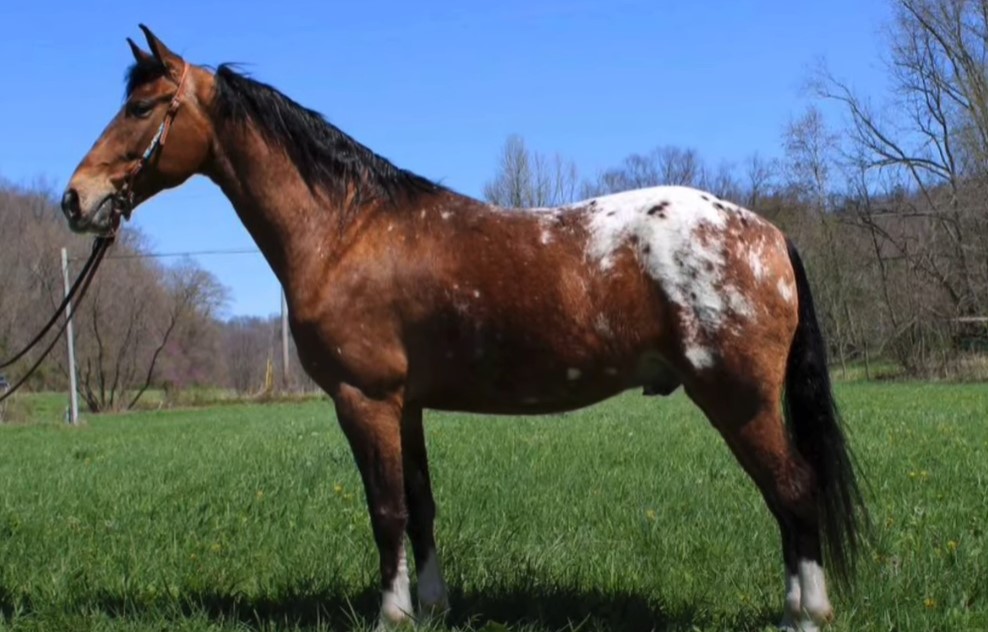
Color Pattern: Blanketed, leopard, roan or snowflake
Another one of the most popular horse breeds with spotted coats is the Walkaloosa. If you’re keen you’ll notice that its name is derived by combining the Tennessee Walking Horse and the Appaloosa.
And while this isn’t the exact origin of the Walkaloosa, it’s a relatively accurate prediction. In the true sense, Walkaloosa is used to describe any gaited horse breed that has the same coloration as Appaloosa spotted horses.
The spotted coloring isn’t the only thing that this breed is known for. It’s also revered for its endurance, bravery and obviously, its gait.
The Walkaloosa Horse Association (WHA) was established in 1983, with the aim of preserving this horse breed. To be approved for registration in the WHA, a horse must meet the following three things:
- Be a descendant of the Walkaloosa breed
- Have Appaloosa coloring and showcase another gait; apart from the trot
- Have parents who are a valid Appaloosa and a gaited horse breed
9. Shetland Pony
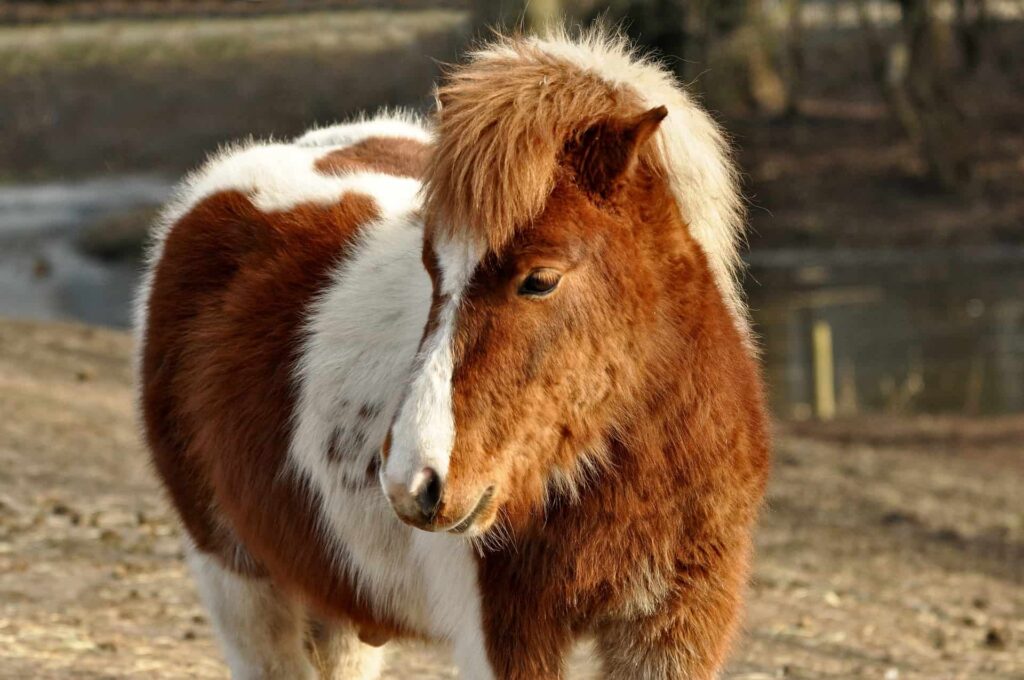
Color Pattern: Pinto
The exact origin of this Pony remains unknown. Ponies were found strolling the rugged terrain of Shetland Islands, Scotland as far back as 1000 years ago.
Shetland ponies are one of the most versatile horse breeds. Their stamina enables them to excel as riding horses. On the other hand, they have such a gentle temperament that makes them excellent pets, especially for kids.
Another reason that makes this spotted horse breed popular is its coloration. These ponies come in every equine color possible, including pinto. Pinto simply means that the horse has massive patches of white and another color. Unfortunately, such horses that are spotted aren’t accepted for registration.
These horses make great trail riding horses, especially for experienced riders. If you have any experience as a Shetland pony breeder, then you know they can be stubborn at times. As such, they’re better for riders who have a little bit of experience under their belt.
10. Miniature Horse

Color Pattern: Pinto
In the past, miniature horses were bred specifically so they could provide companionship to the British aristocracy. But as soon as child labor was prohibited, many breeders started using them in coal mines.
The miniature horse comes in an array of colors, including spotted coats. One famous variety of the miniature horse is the Falabella.
It was developed by crossing Spanish horses with tiny Thoroughbreds and Shetland ponies. This crossbreeding resulted in a miniature horse that was hardy enough to withstand harsh climatic conditions.
Later on, some of the miniature horses were also crossed with Appaloosas. This explains why some of them have spotted coat patterns.
The miniature horse is also one of the fastest breeds and smallest breeds in the world. Quick, cute and beautiful!
11. Icelandic Horse
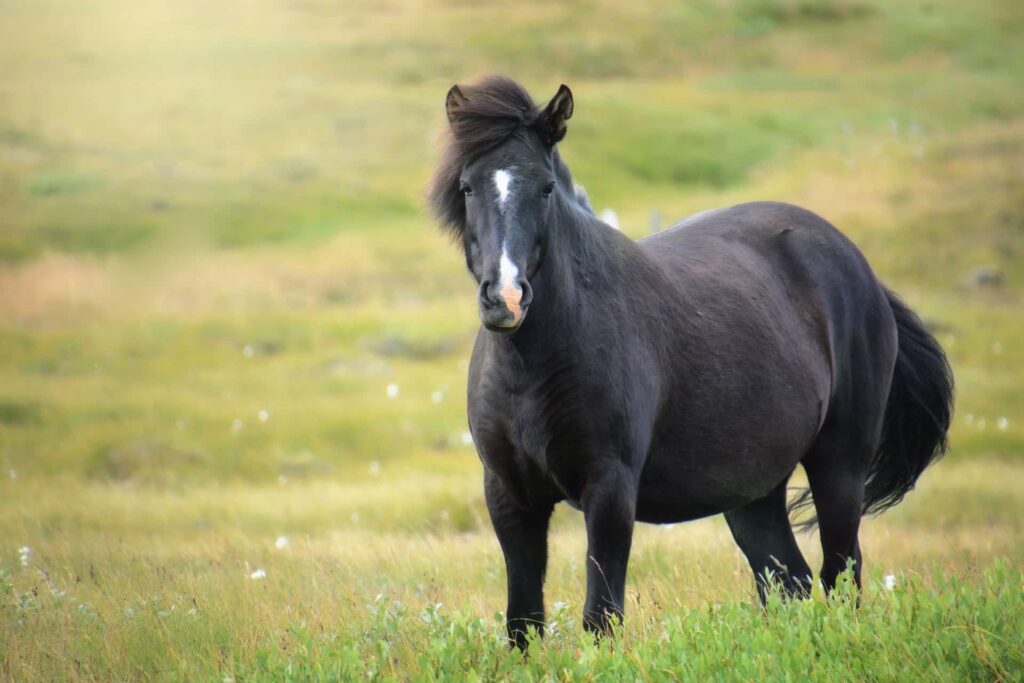
Color Pattern: Spotted
The Icelandic horse looks like an oversized pony breed. It traces its roots to the Mongolian horses used to subdue Asia and some regions in Europe.
What’s more interesting is that it’s the only breed that’s both spotted and pure. It’s managed to retain its purity due to the stringent regulations that the Iceland government has on importing horses.
Icelandic horses come in a variety of colors. But the most popular ones are: brown, black, white (see more black and white horse breeds) and chestnut. Unlike other horse breeds whose spotted patterns are permanent, the Icelandic breed has spots that come and vanish with changing seasons.
12. American Paint Horse
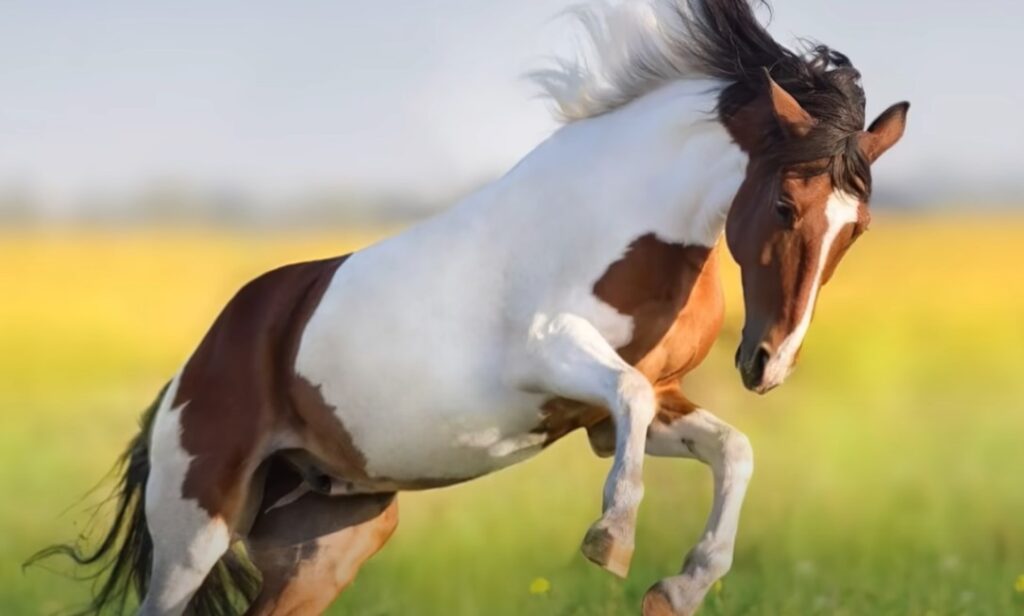
Color Pattern: Tobiano, tovero and overo
Like other spotted breeds, coloration is the most distinct trait of American paint horses. Most of them have giant patches of color, similar to a pinto coat.
That said, the American Paint Horse Association also accepts solid-colored varieties that don’t have any spotted patterns.
This breed can be found in a wide range of colors, most of which are dark coats. The most common are bay, chestnut, black, sorrel or brown alongside the white spots. The only coat pattern that’s not acceptable is the leopard-spotty look of the Appaloosa.
More: Fascinating Facts About the American Paint Horse
FAQs
What kind of horse has polka dots?
The breed that’s most popular for this coat pattern is the Appaloosa. The spots can be spread out throughout its entire body or cover just a section like a blanket.
What kind of horse is white with spots?
The main spotted horses that have these patterns are the Appaloosa and Knabstrupper.
Which horse colors have spots?
There are four main horse colors that are recognized, namely, black (see some beautiful black horse breeds), brown, chestnut and bay. Depending on the breed, any one of these colors can have a spotty pattern; be it leopard, roan, marble or snowflake.
What is a spotted horse called?
Spotted horses are also described as speckled.
Can a Quarter horse have spots?
It’s very rare to encounter Quarter horses that have spotted patterns. Even if you do, chances are that the pinto coloring will only be present on the horse’s spine. Furthermore, their spots tend to be scattered.
Conclusion
The Appaloosa may be the most popular speckled breed but it’s not the only one with this kind of coat. Other spotted horse breeds whose coats contain spots are the American Paint Horse, Knabstrupper, Pony of the Americas, Walkaloosa, Colorado Ranger and more.
